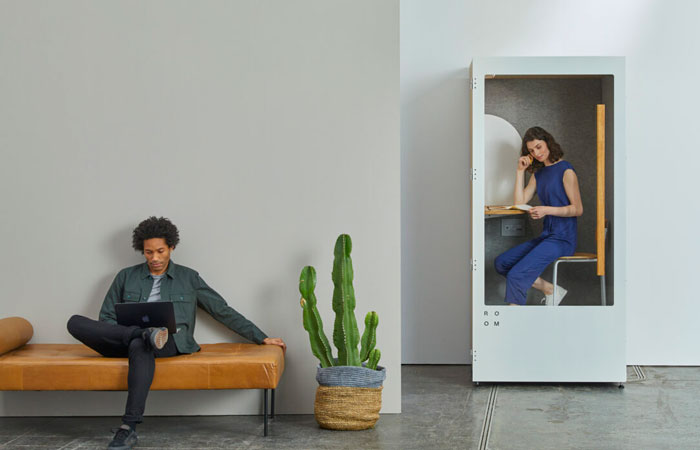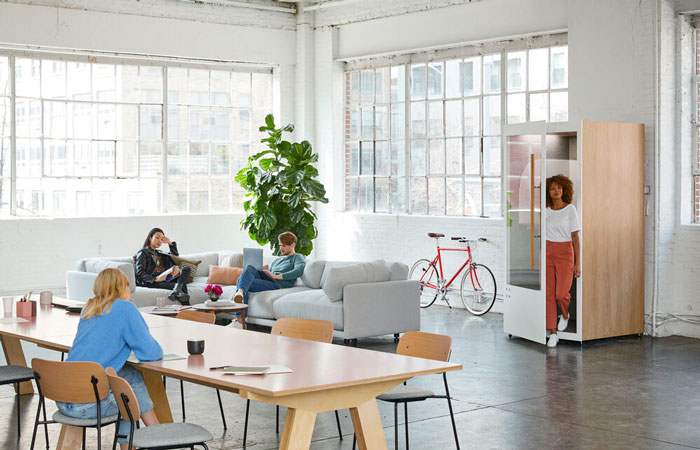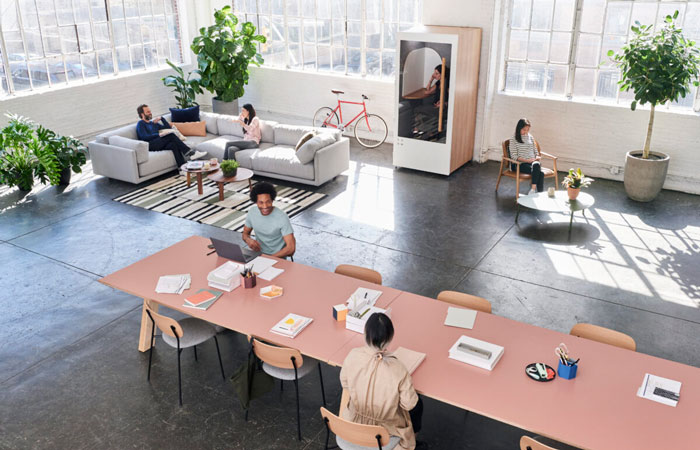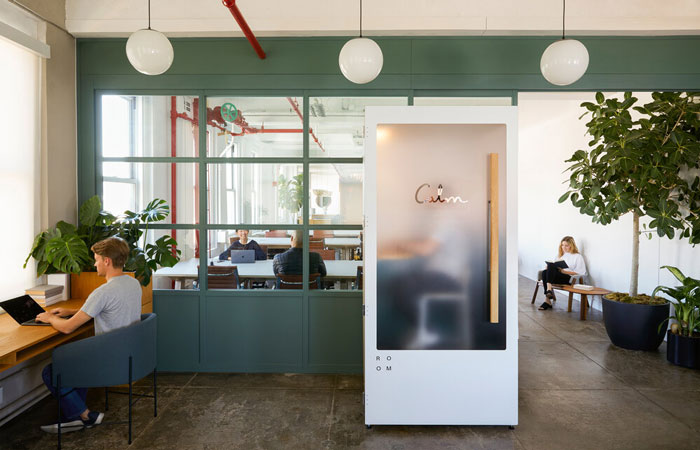Q&A with Alejandra Albarran: Room
When Alejandra Albarran, Director of Design and Innovation at ROOM, emailed us recently we leapt at the chance to ask her more about ROOM and the modern workplace.

1) Please could you tell us a bit about yourself?
I started my career working in fashion and ran my own fashion label for a number of years, before moving into the tech space and, ultimately, interior design. I started working in interiors after I designed my own home, which gave me a real love of space and my first real understanding of how people interact with the built environment. I achieved a diploma in interior design, and then started my own company, which won numerous interior design awards in Latin America. That company is still going strong and in the safe hands of my then business partner, but after eight years I decided to move to ROOM, where I’m Director of Design and Innovation.
2) What is unique about your design and development process?
I’ve designed a wide range of products, but if there’s a unifying thread in my approach and philosophy, it’s that you’ve got to have a concept and purpose. Regardless of what the product is, it needs to be designed with the user in mind. You have to have an understanding of who it’s for and what you want to say with it, whether that’s an app, a jacket or a piece of furniture. This is the part of the design process that I learned very early on in fashion and is something I still apply today to everything I do.

3) How did the concept for ROOM originate?
The concept of ROOM first came about when our co-founders, Brian Chen and Morten Meisner-Jensen, set out to reimagine the modern workplace, and find a solution to two of the biggest challenges faced in open office environments – noise and the lack of privacy. We called it ROOM because we wanted to make ‘room’ in the office environment but not just in a physical sense – we wanted to create room for people, room for creativity, room for privacy. The solution we came up with was a soundproof phone booth.
4) Why is personal space important in open plan workspaces?
In the workplace, privacy is still a basic human need – it’s also something that the open office does not cater for and the mistake many businesses make is that they try to collapse too many different activities into just one or two spaces. If you’re a manager, you’re going to have potentially conflicting needs – you need to be seen as approachable and open, but equally, being in this kind of position, you’ll also need to have private, confidential conversations without the risk of being overheard by eavesdroppers.
Equally, our needs change from day-to-day – but fixed offices don’t cater for this. One day I may want to work in the buzz of a noisy, boisterous office. Other days, removing myself from the crowd and working in a quiet, private space, could be the best thing for me.
Modular furniture, like the soundproof phone booth or room, has become one of the numerous solutions for this issue. We believe that by creating room for privacy, we can create room for collaboration.
5) What are the key features of ROOM and how do they differ from other booths available on the market?
We’ve purposely tried to make our booth as functional as possible, without being too corporate. Ultimately, we wanted to create a product that would fit (in terms of design) in the offices of just about any firm. When we were designing the ROOM phone booth, I wanted to make a space that people would actually want to be in, with every minutiae of detail taken into account. While I wouldn’t want to name names, I think we do this better than any other player within the modular marketplace.
Simplicity is a very important aspect of our phone booth. I took a long time to design that square window, because making it exactly the size it is now makes the booth look a bit wider, which has a big impact. I also leveraged materials that go really well together: grey felt, natural oak and white metal. The result is a very simple and clean look that can exist within so many different environments.

6) What were your environmental considerations when designing ROOM?
Environmental considerations have always been a central part of ROOM’s DNA, and we’re always trying to make our products as sustainable as possible – whether that’s through production, the supply chain, or with the delivery process. We use 1,088 recycled plastic bottles for the soundproofing material in every booth. We’re always striving to make our booths more sustainable – this is who we are as a business, and this is what our customers expect.
7) ROOM is sold internationally, has that always been your intention? How does that fit your environmental ethos?
We want to grow ROOM across the world, but only if we’re able to do so in an environmentally conscious manner, which is one of the reasons why we took the decision to open a second factory. We now have two factories – one in the US and one in Europe – meaning that we don’t have to ship across oceans.
8) How do you think workspaces will evolve in the coming years?
I think there’s an office revolution under way and businesses are slowly coming around to the understanding that space matters, and that space can have a direct impact on the productivity and well-being of staff. The open office is often misunderstood and while it can engender wonderful interactions and engagements between employees, you need to sprinkle in the right types of spaces to accommodate other types of activities. At ROOM our goal is to create workspaces that cater to everyone and provide employees with the environments they need. This includes bridging the gap between the open plan office and the need for private spaces.

9) What is next for ROOM?
We’re definitely thinking larger and we’re thinking modular. What we’ve brought to market is the ‘privacy in an open office’ concept, and this concept extends way beyond the phone booth. There’s more to come, so watch this space!
Contact ROOM




